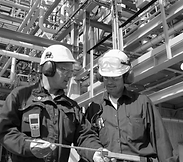Engineering and Technology Quarterly Reviews
ISSN 2622-9374




Published: 22 January 2019
Effect of Height on Retrofitting of Existing Steel Frames Using Buckling Restrained Brace Frames
Sara Seyedfarizani
Sharif University of Technology

Download Full-Text Pdf
10.5281/zenodo.2640444
Pages: 1-15
Keywords: Bracing System, BRB, Ductile, Retrofit, Steel Frame
Abstract
Recent earthquakes indicate the importance of retrofitting existing structures to achieve an acceptable level of performance. Several different methods for retrofitting of existing structures were used by structural designers; Use of bracing systems is a cost-effective method for seismic retrofitting of existing steel frames. In particular, Buckling Restrained Braces (BRBs) are workable choices to be used because of their large energy dissipation capacity especially under moderate to severe earthquakes. Buckling restrained braces yield in tension and compression, exhibits stable and predictable hysteretic behavior. In this paper two existing structure with different heights are retrofitted with BRB. At next stage vulnerability assessment is done according to ASCE 41-06 with pushover analysis by SAP2000 software and compare the seismic parameters with each other to evaluate effect of height in retrofitted buildings with BRB. By having focus on results, it’s observed that, Stiffness of four story building that retrofitted with BRB is larger than eight story but Earthquake energy that dissipated by eight story BRB is more also, four story BRB may undergo less lateral displacements than eight story BRBF and ductility of eight story is larger, so with increasing height, effective stiffness will decrease but ductility will increase. So it’s better to use of BRB for retrofitting high raise building in moderate to high seismicity regions.
References
-
American institute of steel construction (AISC), 2010, "Seismic provisions for structural steel buildings", Chicago, USA.
-
American society of civil engineers (ASCE 41-06), 2007, "Seismic rehabilitation of existing buildings", Boston, USA.
-
American society of civil engineers (ASCE/SEI 7-10), 2010, "Minimum design loads for buildings and other structure", Boston, USA.
-
Aniello, M., and Della Corte, G., and Mazzolani, F., 2008, "Buckling- Restrained braces an experimental study ", Steel tips, Italy.
-
Bozorgnia, Y., and Bertero, V., 2004, "Earthquake Engineering from Engineering Seismology to Performance-Based Engineering", CRC press, chapter 16.
-
Bruneau, M., 2005, “Seismic retrofit of steel structure”, Multidisciplinary Center for Earthquake Engineering Research, Buffalo, NY, USA,
-
Central public works department, Indian institute of technology-MADRAS., 2007, "Handbook on Seismic Retrofit of Building", chapter 1.
-
Deulkar, W., and patil, H., 2010, "Buckling restrained braces for vibration control of building", India.
-
Di Sarno, L., and Elnashai, A. S., 2004, “Bracing system for seismic retrofit of steel frames”, 13th World conference on Earthquake Engineering, B.C., Canada.
-
Farizani, S., and Kazemi, MT., 2015, “Retrofitting of existing steel frames using ductile bracing systems”, conference of science and engineering, Dubai.
-
Fuqua, B. W., 2009, “Buckling Restrained Braced frames as a seismic force resisting system”, Kansas state university, Kansas.
-
Garcia, J., and Teran-Gilmore, A., 2010, "Seismic Performance of Existing Steel Buildings Retrofitted with Buckling-Restrained Braces", ECEE, Mexico.
-
Hussain, S., Benschoten, P., Satari, M., and Lin, S. (2005). Buckling Restrained Braced Frame (BRBF) Structures: Analysis, Design and Approvals Issues, Nippon Steel News, 333.
-
Merrell, M. Y., 2007, “Design of ductile braced frames”, Brigham Young university.
-
Parry Brown, A., and Aiken, I., and Jeff Jafarzadeh, F., 2001, "Buckling Restrained Braces Provide the Key to the Seismic Retrofit of the Wallace F. Bennett Federal Building", USA.
-
Permanent Committee for Revising the Iranian Code of Practice for Seismic Resistant Design of Buildings (Standard 2800), 1988, “Iranian code of practice for Seismic resistant design of buildings”, 1st edition.
-
Permanent Committee for Revising the Iranian Code of Practice for Seismic Resistant Design of Buildings (Standard 2800), 2007, “Iranian code of practice for Seismic resistant design of buildings”, BHRC Publication No. S – 465, 3rd edition.
-
Prinz, S., 2007, “Effect of beam splicing on seismic response of buckling restrained braced frames”, Birgham Young Univresity.
-
Sabelli, R., and Lopez, W., 2004,"Design of Buckling-Restrained Braced Frames", San Francisco, CA.
-
Sabelli, S., and mahin, S., and Chunho Chang., 2003, "Seismic Demands on Steel Braced Frame Buildings with Buckling-Restrained Braces".
-
Uang, C.M., Bruneau, M., Whittaker, A. S., and K.C. Tsai, 2001, “Seismic Design of Steel Structures”, Chapter 9.



